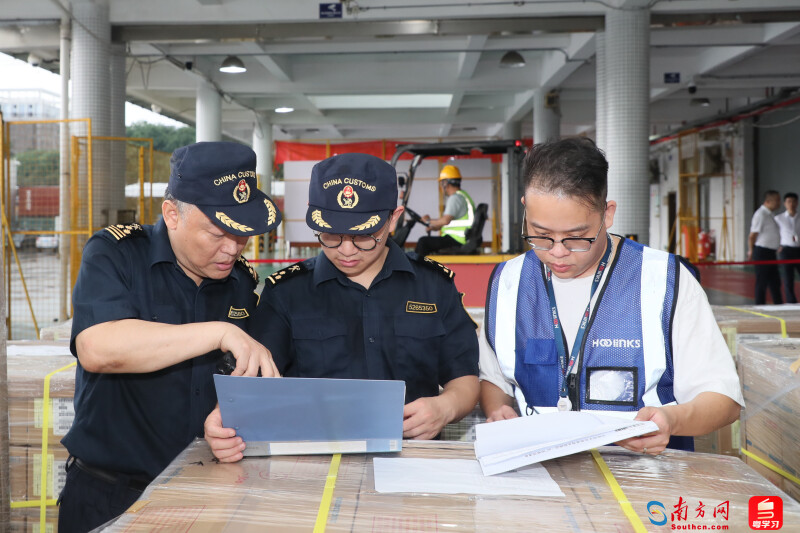




- BRNN
- BRI News
- BRNN News
- Database
Official Documents Polices and Regulations
Inter-government Documents International Cooperation BRI Countries
Business Guide Economic Data BRI Data
Trade
Investment Projects Latest projects
Cases - Content Pool
Containers filled with TCL's semi-finished LCD TVs and components are set to travel on the China-Europe Railway Express to Poland, in Chengdu, southwest China's Sichuan Province.
"With the efficiency of Chengdu International Railway Port, we have established a "Chengdu plus Europe" dual-factory production model," said a TCL Optoelectronic Technology (Chengdu) Co., Ltd. representative.
At the Chengdu factory, modules and electronic parts are prepared for assembly in Poland, where finished products can be delivered to European markets within three days. This dual production model enables the company to serve China's western region as well as Central Asia, the Middle East, and Central and Eastern Europe.
Customs data from Chengdu show that Sichuan's total trade volume reached 751.06 billion yuan (about $105.9 billion) in the first nine months of 2024, achieving record highs with exports of laptops and integrated circuits placing among the top in the nation.
"As platforms like the Western (Chengdu) Science City and Tianfu Laboratory take shape, Sichuan's technological and innovation strengths will grow, and we'll introduce targeted regulatory innovations to further boost the growth of foreign trade" said Fang Xiang, deputy director of Chengdu Customs.
In Guangzhou, south China's Guangdong Province, the Huangpu Global Supply Chain Center, a customs-business collaboration, provides integrated "cross-border logistics plus customs" regulatory services.

Staff members of Luogang Customs check the goods. (southcn.com/Li Jianfeng)
"We embed customs supervision within the logistics and industrial chains of enterprises, supporting major companies to create group or regional supply chain hubs, which enables innovative resource allocation," explained Liu Huabing, director of Luogang Customs under Huangpu Customs.
This innovation has directly benefited local companies, such as Jabil Circuit (Guangzhou) Co., Ltd. "With the Huangpu center, logistics supply chain costs are reduced, labor costs are one-fifth of overseas operations, storage costs are one-third, and efficiency has greatly improved," said Tian Fang, its logistics manager. "We genuinely feel the benefits and convenience brought by these reforms."
Customs authorities across the country are continuing to advance "smart customs" initiatives to optimize the business environment and enhance regulatory efficiency.
Recently, under the supervision of Taicang Customs, a batch of outdoor water treatment equipment from Oase Living Water (Taicang) Co., Ltd. was exported to Germany using the "linked unloading" model.
"Through the integrated 'linked unloading' model by Shanghai and Nanjing Customs, Taicang Port now operates as an extension of Shanghai's Yangshan Port," said Xi Liqian, customs manager at Oase. "Companies can apply once in Taicang and ship through Yangshan Port, saving about 400 yuan per container in logistics costs."
"The fundamentals and strengths of China's economy, such as a vast market, resilience, and potential, remain unchanged," said Wang Lingjun, deputy director of the General Administration of Customs (GAC) of China. "Existing policies and new measures are combining to support foreign trade, and the factors driving growth are accumulating. With this foundation, we are confident in maintaining steady growth in import and export through the fourth quarter. China's economy will continue to improve, and we are well-positioned to achieve annual trade growth targets for both quality and stability."
Intern Han Yifan contributed to this story.

Tel:86-10-65363107, 86-10-65368220, 86-10-65363106